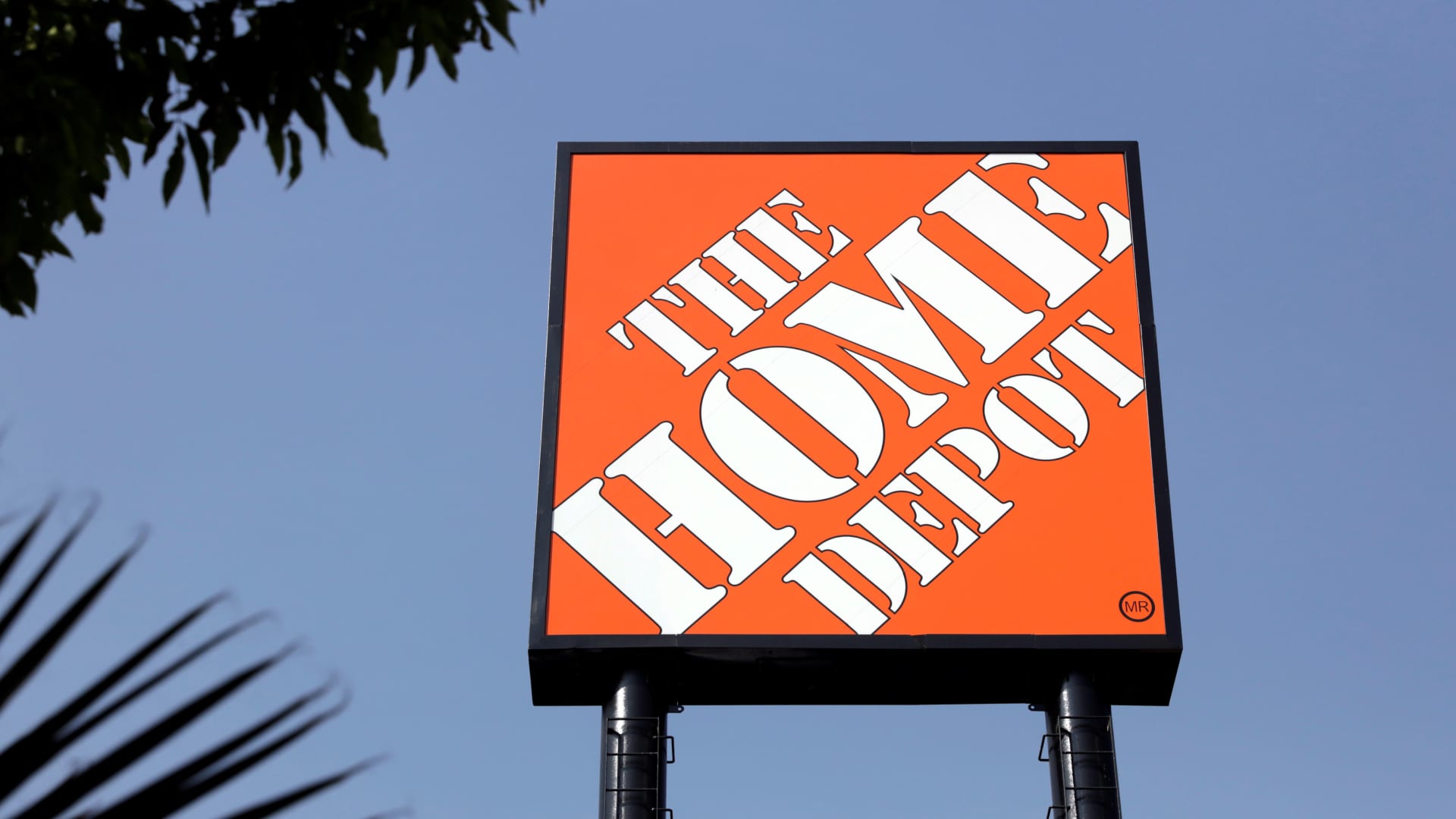Products You May Like
Home Depot on Tuesday posted quarterly revenue below Wall Street’s expectations, as shoppers postponed bigger discretionary projects like bath and kitchen remodels because of higher interest rates and made spring purchases late.
Still, the home improvement retailer reaffirmed its full-year guidance, which includes an additional week from the prior year. It said it expects total sales to grow about 1% in fiscal 2024, including those extra days. However, the retailer said it anticipates comparable sales, which take out the impact of store openings and closures, to decline about 1%, excluding that additional week.
In an interview with CNBC, Chief Financial Officer Richard McPhail said customers are in a waiting game.
“The home improvement customer is extremely healthy from a financial perspective,” he said. “And so it’s not the case of not having the ability to spend. What they tell us is they’re just simply deferring these projects as given higher rates, it just doesn’t seem the right moment to execute.”
Here’s what the company reported for the three-month period that ended April 28 compared with what Wall Street expected, based on a survey of analysts by LSEG:
Earnings per share: $3.63 vs. $3.60 expected
Revenue: $36.42 billion vs. $36.66 billion expected
Net income for the fiscal first quarter decreased to $3.6 billion, or $3.63 per share, from $3.87 billion, or $3.82 per share, in the year-ago period. Net sales fell 2.3% from $37.26 billion.
Comparable sales dropped 2.8% in the fiscal first quarter across the business and declined 3.2% in the U.S.
Home Depot is contending with a tougher housing backdrop, which has dampened demand for do-it-yourself projects. About half of Home Depot’s sales come from DIY customers, and the other half come from pros like roofers and landscapers.
As interest rates remain high, consumers have been reluctant to move out of their homes and into new ones — the kind of turnover that often inspires home projects. Higher interest rates have also dinged the desire for larger-scale projects that can require financing. For the past several quarters, Home Depot has seen customers buy fewer big-ticket items and take on more modest projects – a trend that persisted in the most recent quarter.
In the fiscal first quarter, customers made fewer visits to Home Depot’s stores and website and tended to spend less when they did. Customer transactions declined 1% to 386.8 million and average ticket fell 1.3% to $90.68.
Inflation may also be playing a role in that pullback, as consumers spend more money on essentials and have to make trade-offs when spending discretionary income.
Home Depot has seen sales moderate after more than two years of explosive demand during the Covid pandemic. The company posted its worst revenue miss in nearly two decades and cut its forecast in the year-ago first quarter. Home Depot’s sales totaled $152.7 billion in the fiscal year that ended in late January, a drop of 3% year over year.
To overcome those challenges, the home improvement retailer has revved up its strategy to attract pros, since they tend to buy larger quantities and offer a steadier source of sales. Home Depot announced in late March that it would acquire SRS Distribution, a Texas-based specialty distributor of roofing, landscaping and pool supplies, for $18.25 billion in the largest acquisition in the company’s history. Home Depot has a growing network of distribution centers across the country that can store and deliver roofing shingles, insulation and other supplies straight to job sites.
Along with wooing pros, Home Depot is trying to drive growth by opening about a dozen new stores this fiscal year and adding features to improve its online and in-store experience.
Shares of Home Depot closed Monday at $340.96. So far this year, Home Depot’s shares have fallen about 2% compared with the roughly 9% gains of the S&P 500.
This is a developing story. Please check back for updates.
